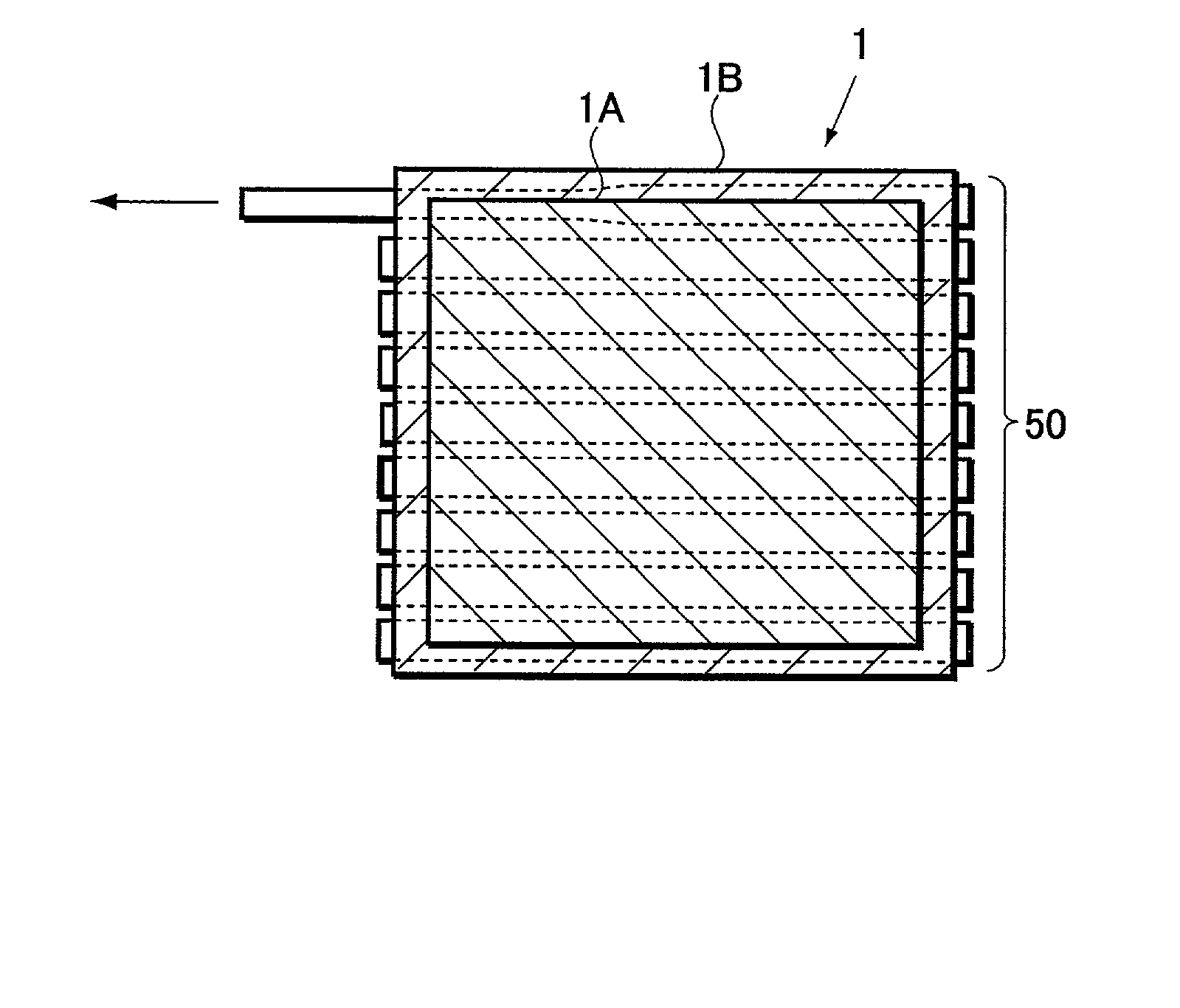Display apparatus
a technology for display panels and components, applied in the field of display apparatuses, can solve the problems of inability to easily replace defect parts, increase in cost, undesirable reduction of heat transfer from display panels to chassis, etc., and achieve the effect of simplifying the disassembly process and facilitating the peeling operation
- Summary
- Abstract
- Description
- Claims
- Application Information
AI Technical Summary
Benefits of technology
Problems solved by technology
Method used
Image
Examples
Embodiment Construction
[0026] A preferred embodiment according to the present invention will be described hereinafter with reference to the accompanying drawings (the same components as those of the prior art are designated by the same reference numerals and the repeated part of the description is omitted).
[0027] FIG. 1 and FIGS. 2A and 2B are explanatory diagrams for illustrating the construction of a display apparatus according to a preferred embodiment of the present invention, in which FIG. 1 is a plan view and FIGS. 2A and 2B are side views. The illustrated display apparatus has a PDP (Plasma Display Panel) 1 which is configured such that a front glass substrate 1A and a back glass substrate 1B are bonded together with a discharge space 1C between. To the back surface of the PDP 1 a chassis 3 is attached with a plurality of double-faced adhesive tapes 50 interposed therebetween. The chassis 3 is made of a metal such as aluminum, and so configured as to cover at least the entire back surface of the ba...
PUM
| Property | Measurement | Unit |
|---|---|---|
| breaking elongation rate | aaaaa | aaaaa |
| adhesive strength | aaaaa | aaaaa |
| shear adhesive strength | aaaaa | aaaaa |
Abstract
Description
Claims
Application Information
 Login to View More
Login to View More - R&D
- Intellectual Property
- Life Sciences
- Materials
- Tech Scout
- Unparalleled Data Quality
- Higher Quality Content
- 60% Fewer Hallucinations
Browse by: Latest US Patents, China's latest patents, Technical Efficacy Thesaurus, Application Domain, Technology Topic, Popular Technical Reports.
© 2025 PatSnap. All rights reserved.Legal|Privacy policy|Modern Slavery Act Transparency Statement|Sitemap|About US| Contact US: help@patsnap.com



